Explaining the Explosion-Proof Levels of Explosion-Proof Electric Hoists
Date: 2025-02-13 Share:
Understanding Explosion-Proof Electric Hoists
What is an Explosion-Proof Electric Hoist?
An explosion-proof electric hoist is a special kind of a lifting gadget engineered to be used in hazardous locations where the possibility of flammable gases, vapors or combustible dusts exists. Ignition for these explosions may be provided through using the standard electrical equipment. The explosion-proof hoist in particular has been designed with explosion-proof enclosure, intrinsically safe circuits, and methods of isolating the hazard to prevent explosion. They are designed to meet certain standards for safety and follow regulations such as those imposed by OSHA; they have to be certified by accredited test houses.
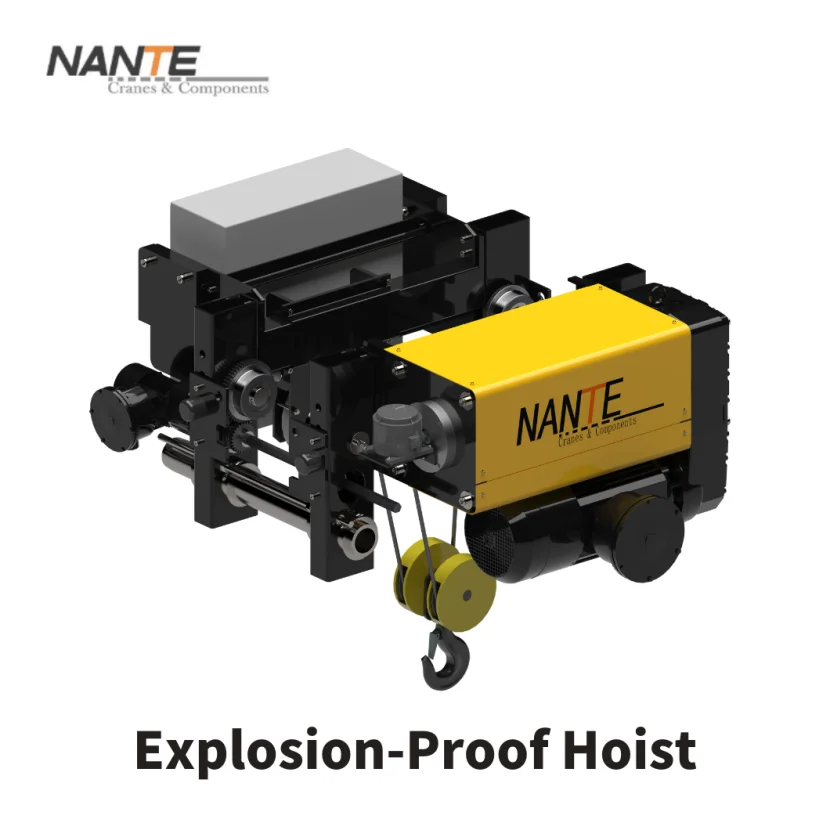
Why are Explosion-Proof Hoists Necessary?
The use of non-explosion-proof equipment in hazardous environments runs a number of risks, including those of fires and explosions. Standard electrical equipment can be an ignition source in these areas; therefore, the operation requires special, explosion-proof equipment. Hazardous locations are classified along with the setting of safety standards by regulatory bodies like OSHA. These set standards make sure that the equipment present does not act as a source of ignition.
Standards and regulations exist that are intended to protect people and equipment from potential explosions caused by igniting an explosive mixture of a flammable gas or dust combined with air. The National Electrical Code, Canadian Electrical Code, and National Fire Protection Association also address hazardous locations. These regulations are policed by accredited Test Houses, and compliance with them is mandatory by manufacturers and operators.
Hazardous Locations
Hazardous locations are those with the presence of flammable or explosive substances. Hazardous locations are classified according to the nature and probability of hazardous material presence. The location of these hazardous materials includes aircraft hangars, gasoline stations, and chemical plants.
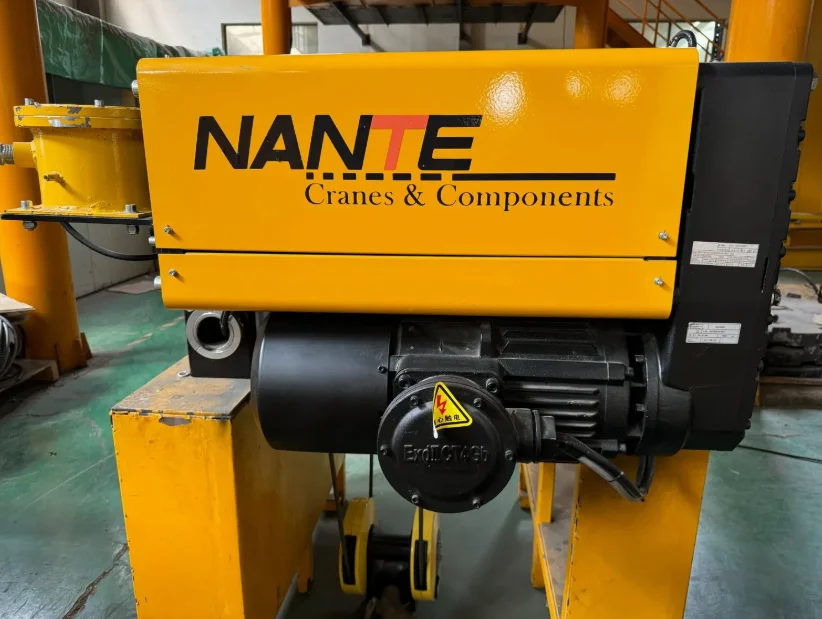
Explosion-Proof Classifications and Standards
Explosion-Proof Class and Division System (North America)
Methods of Hazardous Location Explosion-Proof Classification:
Hazardous locations are categorized based on Class and Division in North America. The system defines the nature of the hazardous material present and the chances that a hazardous material is available.
Class I: Areas with the presence of flammable gases or vapors. It may incorporate areas such as the petroleum refineries, aircraft refueling stations.
Class II: Areas with combustible dust
Class III: Areas with ignitable fibers or flyings.
Division 1: Indicates that hazardous materials under normal conditions of operation
Division 2: Represents hazardous substances that are not likely to occur normally but by abnormal conditions like accidental rupture.
Groups of Explosion-Proof Classifications
Within each class, there are groups. These split the hazardous material further. For Class I, these are groups A, B, C and D while Class II includes E, F, and G. The group is very important because it defines what protection is to be used in an apparatus.
- Group A: Acetylene
- Group B:Hydrogen
- Group C:Ethylene
- Group D:Propane
- Group E, F, G:Combustible Dusts
Zone System (International) of Explosion-Proof Classifications
The alternative to this Class/Division system is an internationally used mainly in Europe – the Zone system. The most widely used recent terminology classifies these areas using Zone 0, Zone 1, and Zone 2.
Zone 0: A location where the atmosphere contains, or may likely contain, ignitable concentrations of flammable gas continuously or frequently in normal operations.
Zone 1: Area where the occurrence of an ignitable gas-air mixture is probable during normal operating conditions.
Zone 2: An area in which an explosive gas atmosphere is not likely to occur in normal operation and if it occurs it will exist for a short period.
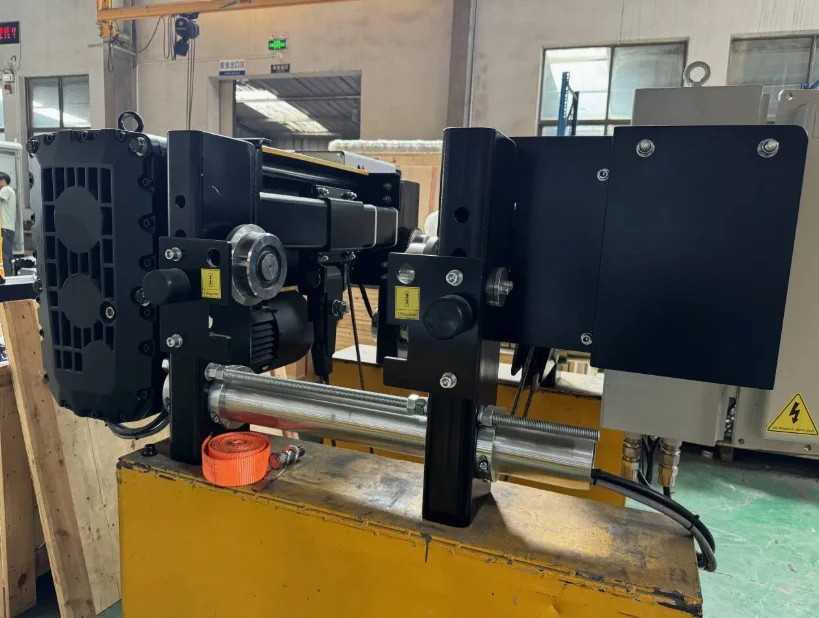
Explosion-Proof Temperature Classes
Temperature classes -T1 to T6 define the maximum permissible surface temperatures of apparatus. It ensures that an apparatus cannot be an ignition source. An approval for higher-rated class temperature-rated equipment goes into an area with a requirement having a lower-rated class temperature rating.
- T1 :450°C (842°F)
- T2: 300°C (572°F)
- T3 : 200°C (392°F)
- T4: 135°C (275°F)
- T5 :100°C (212°F)
- T6: 85°C (185°F)
Explosion-Proof Hoist Relevant Standards and Certifications
To comply with the requirements for safety according to NEC, CEC, ISO, ATEX certified hoists, among others, explosion-proof hoist, which shall be required during this process, will be subjected to tests by accredited test house with an aim of ascertaining if they have acquired the requisite level of safety needed. They will ensure through their certificates the equipment are unable to create any arc and sparks or hot in a way which can make the surrounding atmosphere erupt.
How Explosion-Proofing of Explosion-Proof Hoist is Achieved
Basic Principles of Explosion Protection of Explosion-Proof Hoist
Three basic principles can prevent Explosion-Proof Hoist from becoming an ignition source. These are :
Explosion confinement: Explosion-Proof Hoistshall be so designed that an explosion occurring within the equipment will not propagate outside the equipment.
Limitation of energy: The available energy of Explosion-Proof Hoist shall be insufficient to cause ignition.
Isolation of hazard: Hazardous material of Explosion-Proof Hoist shall be prevented from reaching the potential ignition source.
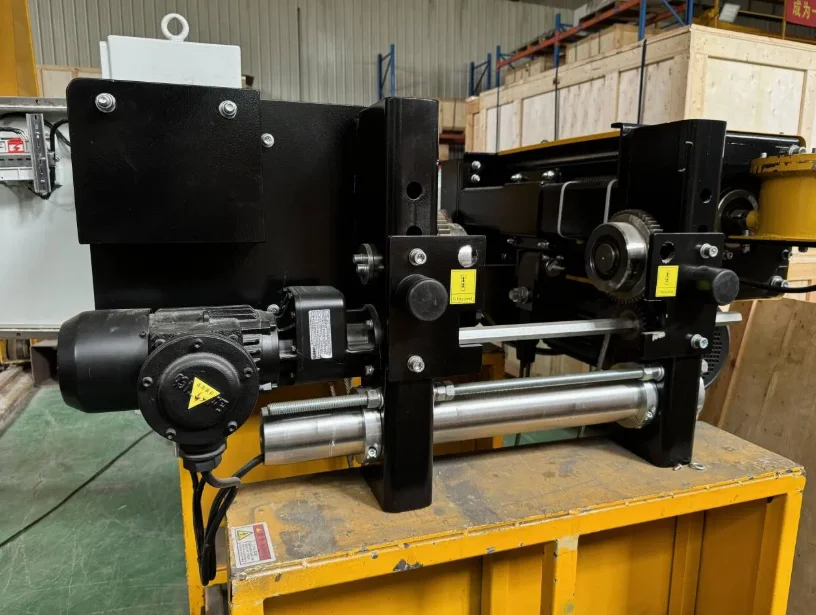
Methods of Achieving Explosion Protection of Explosion-Proof Hoist
Confinement explosion: Explosions can be confined within an explosion-proof enclosure that is able to withstand an internal explosion so that the explosion will not reach the surrounding atmosphere. explosion-proof hoists are designed and tested for resisting internal explosions,
Energy limitation: this is through the use of intrinsically safe circuits that limit electrical and thermal energy thus preventing ignition of explosion-proof hoists. Intrinsically safe barriers control the energy released due to wiring or component failure. Pneumatic and fibre optic systems are also used as they eliminate electrical energy as a source of ignition.
Isolating the hazardous: It prevents the entry of the hazardous material into the housing or delays its entry through processes such as pressurization and purging, oil immersion, hermetic sealing encapsulation, and restricted breathing.
Major Components of Explosion-Proof Hoist and their Explosions-Proof Features
Motors: Motors of explosion-proof hoist are designed and nameplate for hazardous locations. The motors are designed to dissipate the heat in order to prevent overheating and have appropriate motor protection class.
Control Enclosures: Fabricated from materials such as cast aluminum, explosion-proof hoist are designed to be explosion tight. In other words the enclosure would contain an internal explosion.
Wiring and Connections: Rigid conduit with seal fittings provides protection for the electrical circuit in addition to containing an internal ignition.
Limit Switches: A limit switch of explosion-proof hoist will have a NEMA 7/9 nameplate. The NEMA 7/9 nameplate rating is approved for use in both Class 1 and Class 2 hazardous locations.
Braking system: explosion-proof hoists’ specially designed brakes have given heat dissipation.
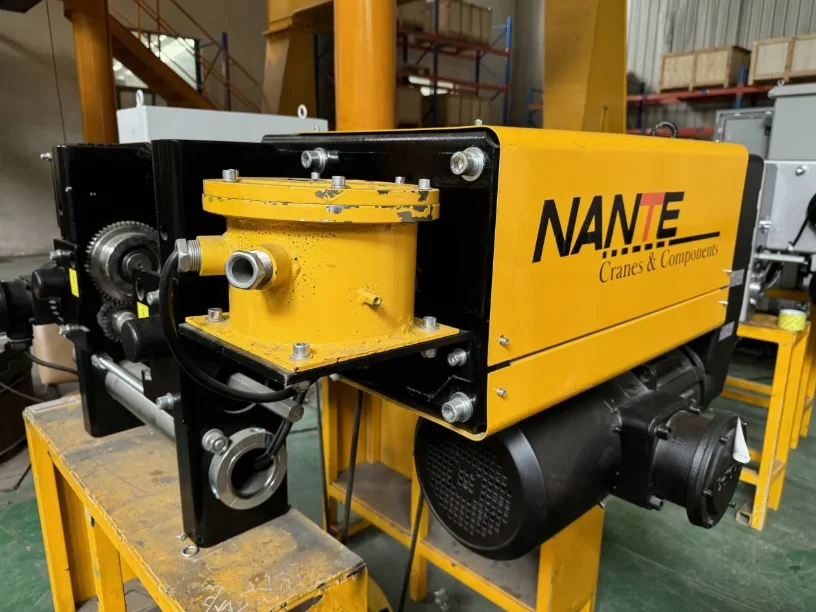
Nante Crane Explosion-Proof Electric Hoists: Features and Advantages
Overview of Nante’s Explosion-Proof Hoists
Nante is one of a few most valued manufacturers of explosion-proof hoists and crane components, designing all kinds of lifting crane equipment for hazardous sites.
Key Features and Benefits of Nante’s Explosion-Proof Hoists
The Nante Explosion proof hoists are set up with features to enhance safety and strength in performance.
Nante hoists also hold the Ex db eb IIC T4 Gb certification for an explosive gas environment of grade IIA, IIB, IIC, T1 to T4, Zone 1 and Zone 2; they also bear Ex tb IIIC T130℃ Db certification for conductive dust environments.
Loading Capacity: The load capacity for Nante hoists ranges from 2 to 10 tons.
Wheels: The cross-travel 2Cr13 stainless steel wheels ensure no spark for long service life.
Control Panel: Flameproof enclosure, IP65 for Zone 1 and 2, to make sure high safety and protection against dust.
Hook : Spark-free hook 316L Stainless Steel non acidic resistant structure aims for longevity of service
Pendant control: an IP 66 two-speed Ex -control pendant. EX ll CT4 environment application
Gear Limit Switch:The Rotational limit switch are protected by flameproof enclosure and IP65 feature.
Application Areas of Nante’s Explosion-Proof Hoists
Nante’s hoists applicable for the most different tasks, starting from factories and workshops up to warehouses. They can be installed on single-girder, double-beam, gantry and slewing cranes.
Conclusion: Choosing the Right Explosion-Proof Hoist for Safety
When selecting equipment for hazardous locations, safety should always be the top priority. Explosion-proof hoists, like those manufactured by Nante, play a critical role in reducing the risk of explosions and ensuring operational safety in volatile environments.
By choosing the right explosion-proof hoist, you can ensure that your equipment operates safely and efficiently, even in the most challenging hazardous environments.
 English
English






